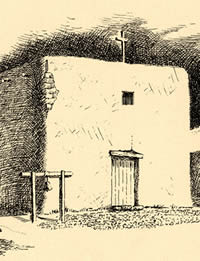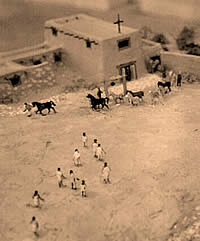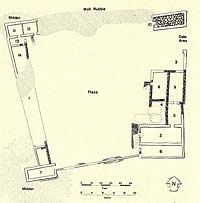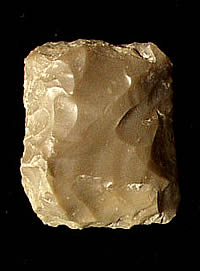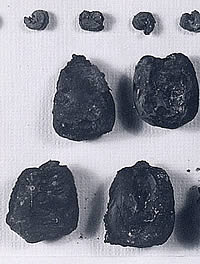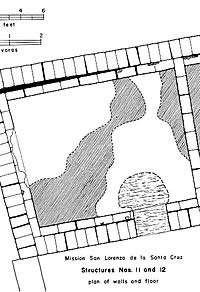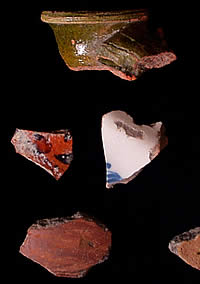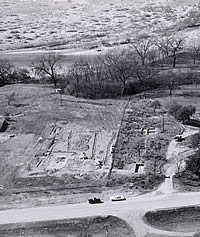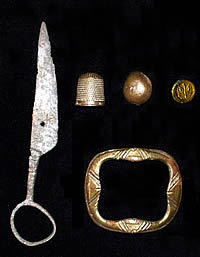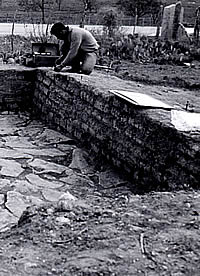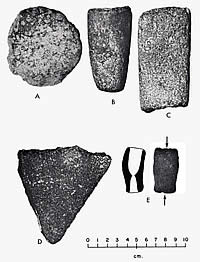Misson San Lorenzo de la Santa Cruz
Mission San Lorenzo de la Santa Cruz was a short-lived Franciscan mission established for the Indians at a large spring on the upper Nueces River in what was then the northern border of New Spain. Founded in 1762 by Franciscan missionaries, San Lorenzo was built for Lipan Apaches in hopes of pacifying their attacks along the northern frontier and as a way of maintaining Spanish control in the face of threats by the French. The Franciscan friars also hoped to christianize the Indians they brought into their fold.
Although it operated for a scant nine years, the Spanish fathers, along with Indian laborers, accomplished a massive construction feat at the wilderness outpost, erecting, in several stages, more than 14 buildings of adobe and limestone situated around a plaza. The complex included a church, sacristy, granary, cabins for the Indians, bastion, and a series of irrigation ditches for the nearby fields.
With the exception of hand-wrought iron nails, all the building materials were made from local resources, including adobe mud, limestone blocks, oak and juniper timbers, lime made from local limestone in a nearby kiln, and sand, gravel and cobbles from the nearby Nueces River. The buildings and outer walls proved to be sufficiently strong to hold back repeated attacks by Comanches and other Indians. According to historic accounts, the Lipan Apaches at the mission were highly impressed with the granary, seeing it as a place to take refuge during Indian attacks.
The mission,however, was small, never officially sanctioned, poorly supplied, and unsuccessful in converting Lipan Apaches. Nine years after it was founded, the mission was burned and abandoned. The adobe structures began to deteriorate rapidly, although visitors, including historic Indian groups, continued to camp at the site. Between 1857 and 1861, the site served as a temporary U. S. military outpost known as Camp Wood.
When archeologists from the Texas Memorial Museum began investigations at the site in 1962, they found that most of the walls of the mission had fallen into low mounds of crumbled adobe. Once excavations began, the archeologists uncovered hundreds of tons of construction and midden debris and found that most of the floors were intact.
Although a relatively small number of people occupied San Lorenzo for less than a decade, a large quantity of pottery was used, judging from the thousands of sherds left at the site. Many of the ceramic vessels came from far afield—majolica from Puebla in central Mexico, olive jars from Spain, glass beads from Venice, salt-glazed stoneware from England, faience from France, and porcelain from the Orient. As archeologist Curtis Tunnell observed, “Even this poor mission, one of the smallest and most remote of outposts, benefited from the world-wide trade network of eighteenth-century Spain.”
A surprising finding of the archeological investigations was that the Lipans, having been exposed to European influences for nearly 200 years, still practiced a number of native crafts and traditions. The trash middens inside the Indian quarters were littered with chipped stone tools—small knives, and scrapers—and a quantity of stone tool making debris. Archeologists also found a small amount of crude, locally made Indian pottery similar to that made by earlier Plains Apache groups of the Dismal River Aspect ( Nebraska and northern Plains areas).
Under the church floor, archeologists found the burials of 17 Indians, 11 of whom were women and children—possibly the victims of a smallpox epidemic that ravaged the mission in 1764.
Credits and Sources:
This section is derived, and partially abstracted from, A Lipan Apache Mission: San Lorenzo de la Santa Cruz, 1762-1771, by Curtis D. Tunnell and W. W. Newcomb, Jr. Images are from TARL records and collections.
Tunnell,Curtis D. and W.W.Newcomb, Jr.
1969 A Lipan Apache Mission: San Lorenzo de la Santa Cruz, 1762-1771.
Bulletin of the Texas Memorial Museum 14, University of Texas at Austin.
Links:
Handbook of Texas Online: Mission San Lorenzo de la Santa Cruz
